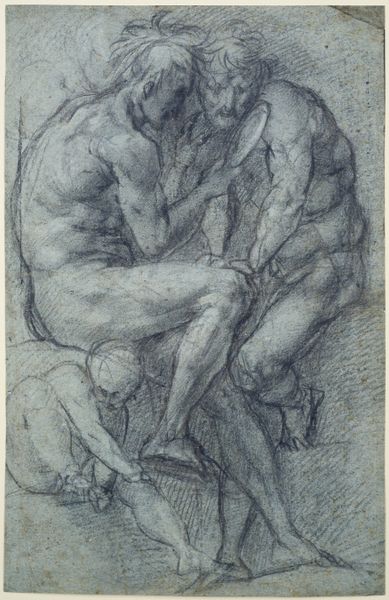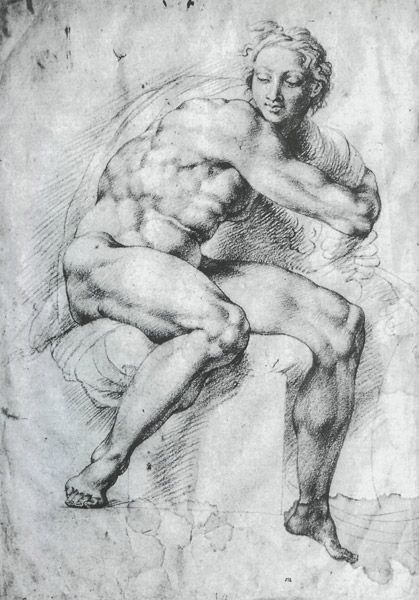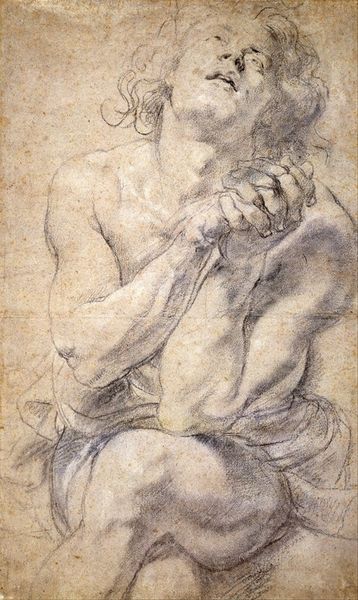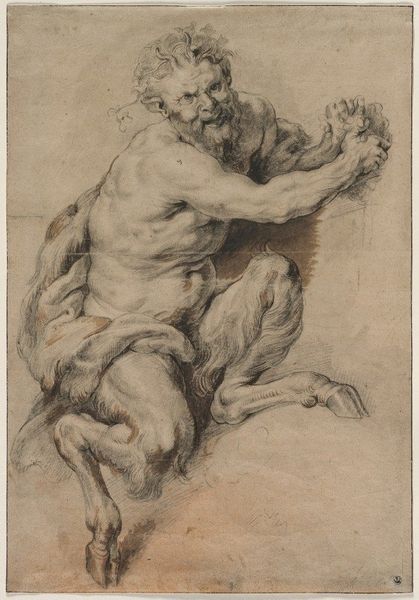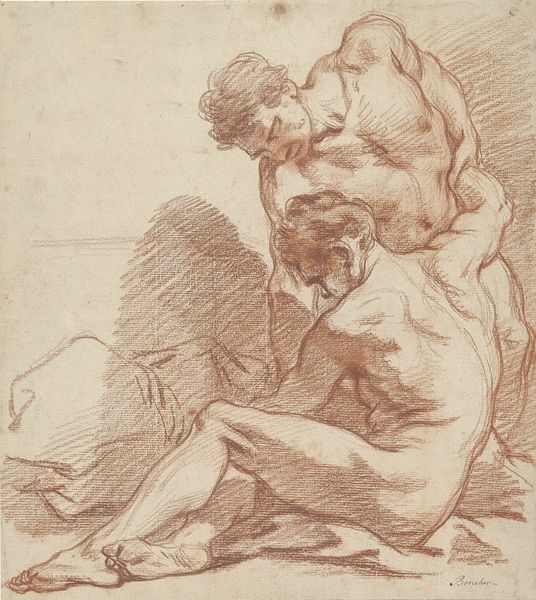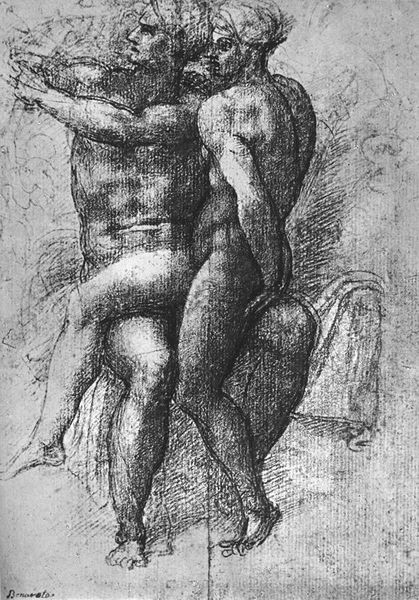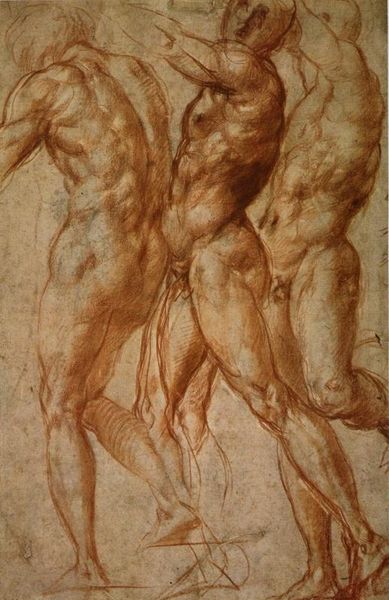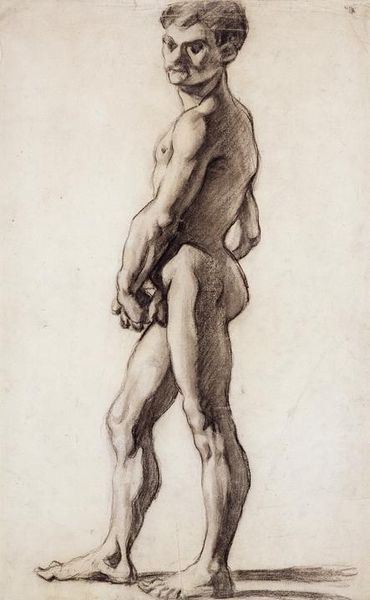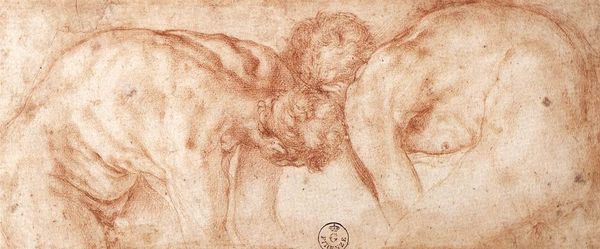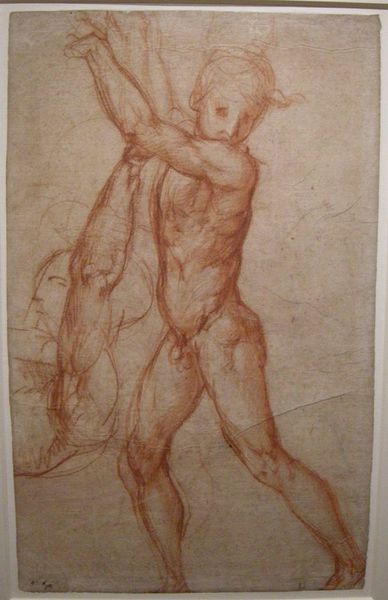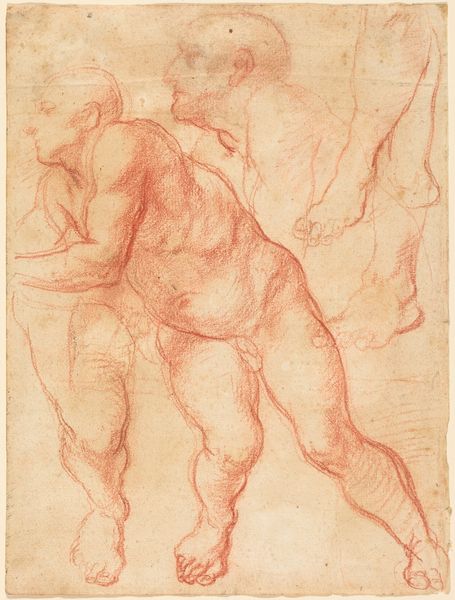
Dimensions: 42 x 27 cm
Copyright: Public domain
Editor: So, this is Jacopo Pontormo's "Two Male Figures Looking in a Mirror and a Putto," a charcoal drawing from 1518. I find the almost claustrophobic composition striking; the figures are packed so tightly together. What’s your take on this drawing, particularly its historical context? Curator: It’s interesting you mention the composition. Consider Mannerism, the art movement Pontormo was part of. It was a period reacting against the High Renaissance ideals of balance and harmony. How do you see that push against those ideals reflected in this drawing? Editor: I suppose it's in the crowded composition, the figures being crammed together rather than being arranged serenely? The almost distorted anatomy feels very different than a Renaissance painting. Curator: Precisely! It disrupts classical conventions. Mannerism thrived in courts across Europe, reflecting the anxieties of the time – religious conflicts, political instability. Does knowing this influence your viewing of these figures? The mirror, the putto… what might those symbolize within this context? Editor: That makes me wonder if the mirror reflects something beyond just their physical appearance, maybe a deeper uncertainty? And the putto could be a sort of mocking Cupid, suggesting failed love or something like that. It also seems worth noting that a piece that focused on two male figures at the time might also have a specific cultural implication or connection to a queer reading. Curator: Indeed! These are astute observations. The visual language, the social anxieties…they all play into the reception of such a work. We're seeing not just artistic style, but also social history reflected through imagery. Thinking about the museum as a modern-day patron, do you think contemporary interpretations shape how we view Pontormo's intent? Editor: Absolutely! Knowing about queer theory, for example, inevitably influences my reading of a piece. Thanks for putting that into perspective! It’s given me so much to consider. Curator: My pleasure. Thinking about art in terms of its historical moment, and how our moment shapes its reception is vital to art historical understanding.
Comments
No comments
Be the first to comment and join the conversation on the ultimate creative platform.
